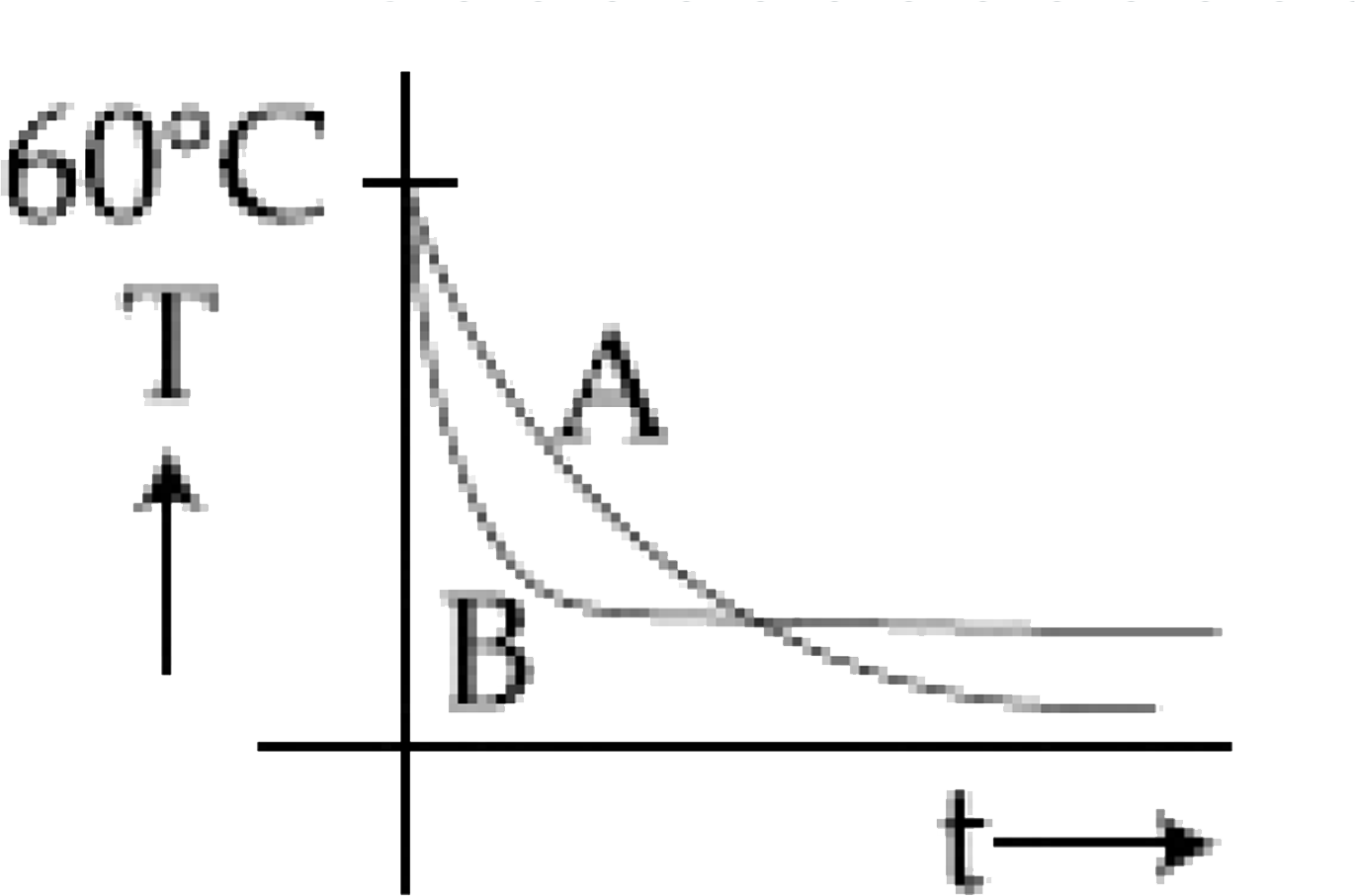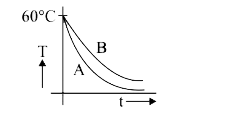Two identical beakers A and B contain equal volumes of two different liquids at 60∘C each and left to cool down. Liquid in A has density of 8×102kg/m2 and specific heat of 2000Jkg−1K−1 while liquid in B has density of 103kgm−3 and specific heat of 400Jkg−1K−1. Which of the following best describes their temperature versus time graph schematically? (assume the emissivity of both the beakers to be the same)




The correct Answer is:B
Step by step video & text solution for Two identical beakers A and B contain equal volumes of two different liquids at 60^(@)C each and left to cool down. Liquid in A has density of 8xx10^(2)kg//m^(2) and specific heat of 2000J kg^(-1)K^(-1) while liquid in B has density of 10^(3)kg m^(-3) and specific heat of 400J kg^(-1)K^(-1). Which of the following best describes their temperature versus time graph schematically? (assume the emissivity of both the beakers to be the same) by Physics experts to help you in doubts & scoring excellent marks in Class 12 exams.
Updated on:21/07/2023Topper's Solved these Questions
Similar Questions
Specific heat capacity of water is ____ J kg−1K−1.
View Solution200g of water and a equal volume of another liquid of mass 250g are placed in turn in the same calorimeter of mass 100g and specific heat capacity 420Jkg−1K−1. The liquids which are constantly stirred are found to cool from 60∘C and 20∘C in 180s and 140s respectively. Find the specific heat capacity of the liquid. The temperature of the surroundings =20∘C
View Solution
Knowledge Check
Two identical beakers A and B contain equal volumes of two different liquids at 60∘C each and left to cool down. Liquid in A has density of 8×102kg/m3 and specific heat of 2000Jkg−1K−1 while liquid in B has density of 103kgm−3 and specific heat of 4000Jkg−1K−1 . Which of the following best describes their temperature versus time graph schematically ? (assume the emissivity of both the beakers to be the same)
A B
B C
C D
D
The molar specific heat of a gas at constant volume is 12307.69 J kg−1K−1. If the ratio of the two specific heats is 1.65, calculate the difference between the two molar specific heats of gas.
A7999 J kg−1K−1B7245 J kg−1K−1C6890 J kg−1K−1D4067 J kg−1K−1The volume of 1kg of hydrogen gas at N.T.P. is 11.2m3. Specific heat of hydrogen at constant volume is 100.6J kg.−1K−1. Find the specific heat at constant pressure in Jkg.−1K−1 ?
A12.2B142.2C163.4D182.3
What will be the result of mixing 2kg of cooper at 100∘C with 0.75 kg of ice at 0∘C (Specific heat capacity of cooper =378Jkg−1K−1 specific heat capacity of water =4200Jkg−1K−1 and specific latent heat of fusion of ice =336×103Jkg−1)
View SolutionAn electric kettle of 2000 Wis used to boil 20 litres of water. Find the time required to boil to the water from its initial temperature of 20∘C. (Take specific heat of water as 4200Jkg−1K−1. Density of water =1000kgm−3)
View SolutionA calorimeter has mass 100 g and specific heat 0.1 kcal/kg.∘C. It contains 250 g of liquid at 30∘C having specific heat of 0.4 kcal/ kg.∘C . If we drop a piece of ice of mass 10 g at 0∘c into it , what will be the temperature of the mixture ?
View SolutionA steel ball of density 8.0×103kg/m3 and radius 2 mm is observed to fall with a terminal velocity 1.0×10−2m/s in a liquid of density 1.8×103kg/m3 . Calculate the viscosity of the liquid.
View SolutionCalculate the amount of head required to convert 1.00kg of ice at −10∘C into stream at 100∘C at normal pressure Specific heat of ice=2100Jkg−1K−1 intent heat of fusion of ice=3.36×105Jkg−1 specific heat capacity of water =4200Jkg−1k−1 and latent head of vaporisation of water =2.25×106Jkg−1
View Solution
